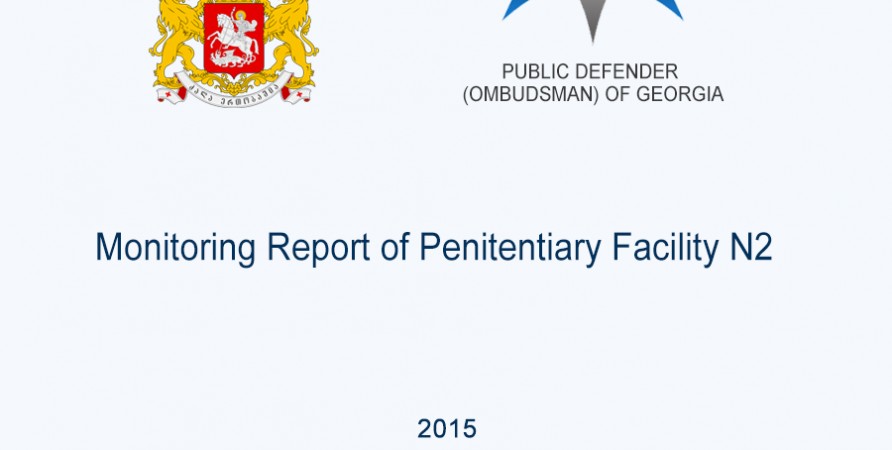Monitoring Report of Penitentiary Facility N2
On 7 October 2015 the Public Defender published a report on the visit of a special preventive group to the penitentiary facilityN2.
The visit revealed that the practice of visual surveillance, used for safety purpose, represents a problem in the facility N2. It is concerning that in the reporting period 33 cases of violence among prisoners were recorded, indicating at the problem of prevention of violence and identification of risk factors.
Conditions in the cells are generally satisfactory, however, the ventilation system is not effective; not all prisoners are provided with 4-square-meter areas; sanitary conditions in solitary confinement cells are unsatisfactory. In the monitoring period the facility had not been supplied with appropriate store products; interviewing prisoners about rehabilitation activities is a positive trend, however, the facility does not provide a variety of rehabilitation activities.
Increase in the number of nurses is welcoming, but the number of doctors has been decreased compared to the previous year; position of one doctor was vacant in the monitoring period; female prisoners are not fully provided with gender-specific health services; timely provision of adequate psychiatric assistance is also a problem.
Use of disciplinary penalties in 2015 has been increased compared to 2014. The lack of guidelines for the application of disciplinary penalties hampers establishment of equal practice; the increased number of prisoners in solitary confinement is alarming; placement of inmates with mental problems in solitary confinement causes particular concern. Short-term visits through the glass barrier, as well as ignoring the residence places of prisoners’ relatives while making a decision on inmates’ placement in prisons are also problematic. Prisoners are unable to make fully confidential phone calls.
It should be noted that the special preventive group has not received any information about physical violence or verbal abuse from prisoners during the visit to the facility; however, a number of problems were identified in terms of prevention of ill-treatment, including deficiencies in medical identification and complete documentation of the alleged cases of ill-treatment.















